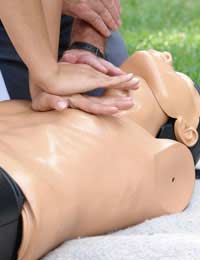Introduction :
A dislocation is an injury in which the ends of your bones are forced from their normal positions. The cause is usually trauma, such as a blow or fall, but dislocation can be caused by an underlying disease, such as rheumatoid arthritis.

[Broken Ankle]
Dislocations are common injuries in contact sports, such as football and hockey, and in sports that may involve falls, such as downhill skiing and volleyball. Dislocations may occur in major joints, such as your shoulder, hip, knee, elbow or ankle or in smaller joints, such as your finger, thumb or toe.
The injury will temporarily deform and immobilize your joint and may result in sudden and severe pain and swelling. A dislocation requires prompt medical attention to return your bones to their proper positions.
Symptoms :
Pain
Tenderness
Difficulty to move injured part
Swelling
Discoloration.
Treatment :
Call medical help as soon as possible
Do not move the joint or try to place it back
Place ice to control swelling
If skin is cut, clean gently and bandage with sterile gauze
Sling or splint the injury in its original position
If injury is serious, check for breathing
If not breathing, provide Cardio pulmonary resuscitation (CPR)
Elevate the feet up to 12 inchesCover the patient with a blanket.
Mind it :
- Don't delay medical care,
- Don't move the joint,
- Put ice on the injured joint.
Prevention :
Wear protective gear while sporting
Make home environment safe
Teach safe habits to children
Do not stand on chairs or other unstable objects
Exercise care while using bath oils
Make use of hand rails while using the stairs.





